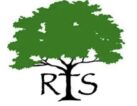Key Takeaways:
1. Regular tree maintenance is crucial: Proper tree care, including pruning and disease prevention, is essential for maintaining healthy and
beautiful trees on your property. Regular maintenance helps prevent potential hazards and ensures the longevity of your trees.
2. Hiring a professional arborist is worth it: When it comes to tree pruning, removal, or diagnosing tree diseases, it’s best to rely on the expertise
of a professional arborist. They have the knowledge, experience, and specialized tools to handle tree care tasks safely and effectively.
3. Trees provide numerous benefits: Trees not only enhance the aesthetics of your landscape but also offer various environmental benefits. They
improve air quality, reduce pollution, provide shade, and increase property value. Understanding the importance of trees can help you make informed
decisions about tree selection and care.
As a homeowner or a lover of nature, it’s important to understand that trees, just like any other living organism, can fall victim to various diseases. Identifying these diseases early on is crucial for maintaining the health and vitality of your trees. In this blog post, we will explore some of the most common tree diseases and provide you with valuable insights on how to identify them. By being proactive and knowledgeable, you can take the necessary steps to protect your trees and ensure their longevity.
Top 5 Tree Diseases To Look Out For
1. Dutch Elm Disease:
Dutch Elm Disease is a fungal infection that affects elm trees. One of the earliest signs is the wilting and yellowing of leaves on individual branches.
As the disease progresses, you may notice brown streaks in the wood and the presence of small, dark beetles. Prompt action is necessary to prevent
the spread of this disease, as it can lead to the death of the entire tree.
2. Oak Wilt:
Oak Wilt is a deadly disease that primarily affects oak trees. Symptoms include wilting leaves, discoloration, and defoliation. Look for fungal mats
under the bark, which can be an indication of the disease. It spreads through root grafts and insect vectors, so it’s important to consult an arborist for
proper diagnosis and treatment.
3. Apple Scab:
Apple Scab is a common fungal disease that affects apple trees. It causes dark, scaly lesions on leaves, fruits, and twigs. Infected leaves may also
curl and drop prematurely. Proper sanitation and regular pruning can help prevent the spread of this disease, along with the use of disease-resistant
apple tree varieties.
4. Cedar Apple Rust:
Cedar Apple Rust is a fungal disease that affects both cedar and apple trees. Look for bright orange, gelatinous spore-producing structures on cedar
trees during wet weather. On apple trees, it causes yellow spots on leaves and fruit. Removing nearby cedar trees and practicing proper tree spacing
can help control the spread of this disease.
5. Anthracnose:
Anthracnose is a fungal disease that affects a wide range of trees, including maple, oak, and sycamore. Symptoms include brown spots on leaves,
defoliation, and twig dieback. Proper pruning to improve air circulation and regular removal of infected plant debris can help manage this disease.
Protect Your Trees By Taking Proper Precautions
Being able to identify common tree diseases is the first step towards effective tree care. By promptly recognizing the signs and symptoms, you can seek professional help from arborists who can provide appropriate treatments and preventive measures. Remember, early intervention is key to preserving the health and beauty of your trees. Regular inspections, proper sanitation, and implementing good cultural practices will go a long way in ensuring the longevity of your beloved trees

